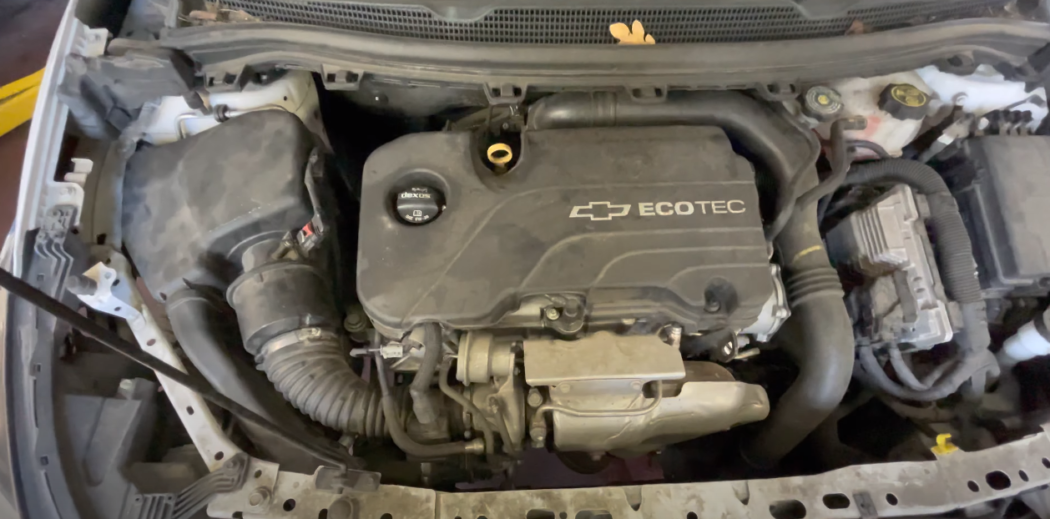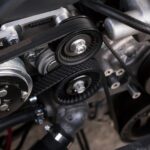The illumination of the Check Engine Light (CEL) can swiftly evoke concern within the heart of any vehicle possessor. It dons the mantle of a cautionary beacon, hinting at potential anomalies lurking beneath the vehicle’s hood. Amidst the array of potential error codes that may materialize, the P1101 code emerges as a common contender for the attention of Chevy Malibu owners. This alphanumeric cipher, “P1101,” stands as an indicator of a particular predicament involving the Mass Airflow Sensor (MAF), nestled within the intricate web of the vehicle’s engine management system. In the forthcoming discourse, we shall plunge into the intricate nuances encapsulating the P1101 error code, diligently unraveling its conceivable origins, delineating the path of troubleshooting, and presenting pragmatic remedies to effectuate a resolution.
Understanding the P1101 Error Code
The P1101 error code is part of the OBD-II (On-Board Diagnostics II) system, which monitors and regulates various components of a vehicle’s engine and emissions systems. When the OBD-II system detects a problem, it logs an error code to help mechanics and technicians pinpoint the issue more efficiently.
The P1101 code specifically points to an issue with the Mass Airflow Sensor (MAF) and its circuit. The MAF sensor plays a crucial role in the engine’s operation by measuring the amount of air entering the engine. This data is used by the engine control unit (ECU) to calculate the appropriate air-fuel mixture for optimal combustion.
Common Causes of the P1101 Error Code

When it comes to your Chevy Malibu’s performance, encountering an error code like P1101 can be both frustrating and concerning. This code specifically points to a problem with the Mass Airflow (MAF) sensor and the air intake system. Let’s dive into the intricacies of this issue, exploring the common causes and what you can do to resolve it.
Dealing with the P1101 error code requires a thorough understanding of its potential triggers. Here are the primary culprits:
1. Faulty MAF Sensor
The MAF sensor plays a pivotal role in measuring the amount of incoming air to determine the correct fuel-to-air ratio for combustion. However, this sensor isn’t invincible and can fall victim to various issues:
- Dirt and Debris: Over time, the MAF sensor can accumulate dirt and debris from the air, affecting its accuracy;
- Physical Damage: External factors or accidents can lead to physical damage to the MAF sensor, causing it to malfunction;
- Normal Wear and Tear: Like any component, the MAF sensor can simply wear out over an extended period.
2. Vacuum Leaks
An optimal air-fuel mixture relies on accurate airflow measurements. Vacuum leaks disrupt this balance by allowing additional air to enter the engine without proper measurement. These leaks often stem from:
- Intake Manifold Gasket: A damaged or deteriorated intake manifold gasket can lead to air leaks in the system;
- Vacuum Hoses: Cracks or disconnections in vacuum hoses can cause unintended air intake.
3. Electrical Issues
The MAF sensor’s functionality hinges on its electrical connections. Faults in these connections can lead to erratic readings or complete failure:
- Damaged Wiring: Wiring exposed to elements or wear can result in disrupted signals from the MAF sensor;
- Poor Connections: Corrosion or loose connections hinder the transmission of accurate data.
4. Air Filter Problems
A clean and unrestricted airflow is crucial for precise MAF sensor readings. An obstructed air filter can skew these readings:
- Clogged Filter: Dust, debris, and contaminants can accumulate on the air filter, hampering airflow;
- Dirty Filter: A neglected air filter with dirt buildup can lead to inaccurate MAF sensor readings.
5. Software Glitches
Modern vehicles heavily rely on electronic control units (ECUs) to manage various systems. Software glitches within the ECU can misinterpret MAF sensor data:
- ECU Software Bugs: Anomalies or bugs in the ECU’s software can cause it to misread MAF sensor values;
- Firmware Issues: Outdated or corrupted firmware can lead to incorrect data interpretation.
6. Exhaust Leaks
An often-overlooked factor, exhaust leaks, can introduce false air into the system, impacting MAF sensor readings:
- Leaky Joints: Gaskets and connections in the exhaust system can degrade, leading to unintended air entry;
- Rusted Pipes: Corrosion in the exhaust system can result in small holes or leaks, affecting the accuracy of readings.
Resolving the P1101 Error Code

This code, often related to the Mass Airflow (MAF) sensor, can stem from a variety of underlying issues. To assist you in navigating the troubleshooting process effectively, we’ve compiled a detailed step-by-step guide that employs tables, bullet lists, and informative paragraphs to ensure you’re well-equipped to tackle this challenge head-on.
Step 1: Inspect the MAF Sensor
Start by visually examining the MAF sensor for any noticeable damage, dirt accumulation, or debris buildup. Use the following table to assess the sensor’s condition:
| Observation | Action |
|---|---|
| Visible dirt or debris | Clean the sensor using appropriate methods. |
| Noticeable damage | Consider replacing the MAF sensor. |
Step 2: Check for Vacuum Leaks
Vacuum leaks can also trigger the P1101 error code. Thoroughly inspect the vacuum hoses and intake manifold gasket for any wear, tear, or damage. Employ the following bullet list to guide your inspection:
- Carefully examine vacuum hoses for cracks or disconnections;
- Inspect the intake manifold gasket for signs of deterioration;
- Promptly address any detected leaks to prevent further complications.
Step 3: Examine Electrical Connections
Damaged or corroded wiring connections can contribute to error code P1101. To evaluate this aspect, carry out the following steps:
- Inspect the MAF sensor’s wiring for any visible damage or corrosion;
- Use a suitable cleaning agent to remove corrosion if detected;
- Repair or replace damaged wires using appropriate tools and materials.
Step 4: Evaluate the Air Filter
A clogged or dirty air filter can disrupt proper airflow, leading to the P1101 error code. The condition of the air filter should be evaluated as follows:
- Remove the air filter and assess its cleanliness;
- If the filter is dirty or clogged, replace it with a new one to ensure optimal airflow.
Step 5: Address Software Concerns
Software-related issues could also contribute to the P1101 error code. For this step, consider the following advice:
- Consult your vehicle’s manual for information on updating the Engine Control Unit (ECU) software or firmware;
- If unsure, seek guidance from a professional to avoid unintended complications.
Step 6: Tackle Exhaust Leaks
Exhaust leaks can introduce false air into the system, potentially triggering the P1101 error code. To address this concern, employ the following table:
| Inspection | Action |
|---|---|
| Leaks or rust in the exhaust system | Thoroughly examine the exhaust components. |
| Damaged components | Repair or replace affected exhaust parts. |
Troubleshooting the P1101 Error Code
Before jumping to conclusions, it’s essential to follow a systematic approach to diagnose and resolve the P1101 error code:
- Inspect the MAF Sensor: Start by checking the MAF sensor for dirt, debris, or damage. If it’s dirty, clean it using a specialized MAF sensor cleaner. If it’s damaged, consider replacing it;
- Check for Vacuum Leaks: Inspect the intake manifold and vacuum lines for any signs of leaks. Use a smoke tester to identify potential leaks more effectively;
- Examine Electrical Connections: Ensure that the MAF sensor’s electrical connections are secure and free from damage. Repair or replace any faulty wires;
- Inspect the Air Filter: A clogged air filter can affect sensor readings. If the air filter is dirty, replace it with a new one;
- Scan for Other Error Codes: Perform a comprehensive OBD-II scan to check for any additional error codes that might be contributing to the issue;
- Solving the P1101 Error Code;
- If your diagnostic efforts lead you to believe that the MAF sensor is indeed the culprit behind the P1101 error code, here’s how you can proceed;
- Replace the MAF Sensor: If the MAF sensor is damaged or its readings remain inaccurate after cleaning, it’s recommended to replace the sensor with a genuine OEM part. Aftermarket sensors may not always provide the same level of accuracy and reliability;
- Clear the Error Code: After replacing the MAF sensor, use an OBD-II scanner to clear the error code and reset the Check Engine Light. This step will verify if the new sensor has resolved the issue.
Conclusion
The P1101 error code on a Chevy Malibu indicates a problem with the Mass Airflow Sensor (MAF) and its circuit. Addressing this issue promptly is crucial to maintain optimal engine performance and fuel efficiency. By understanding the common causes, following systematic troubleshooting steps, and replacing the MAF sensor if needed, you can effectively resolve the P1101 error code and keep your Chevy Malibu running smoothly on the road. If you’re uncertain about any aspect of the diagnosis or repair process, don’t hesitate to consult a professional mechanic for assistance.
FAQ
It’s generally not advisable to continue driving with the P1101 code unresolved. While the vehicle might still operate, the incorrect air-fuel mixture can lead to reduced fuel efficiency and performance.
No, it’s recommended to use a specialized MAF sensor cleaner to clean the sensor. Regular cleaning agents can leave residues that might further affect sensor performance.
The cost of a MAF sensor can vary based on the vehicle’s make and model, as well as whether you’re buying an OEM or aftermarket part. On average, it can range from $50 to $200 or more.
If the error code persists even after replacing the MAF sensor, it’s possible that there are underlying issues such as vacuum leaks, wiring problems, or software issues. A thorough inspection by a professional mechanic might be necessary.
If you’re comfortable working with automotive components and have access to the necessary tools, you might be able to diagnose and fix the issue yourself. However, if you’re unsure, it’s recommended to seek assistance from a qualified mechanic.











